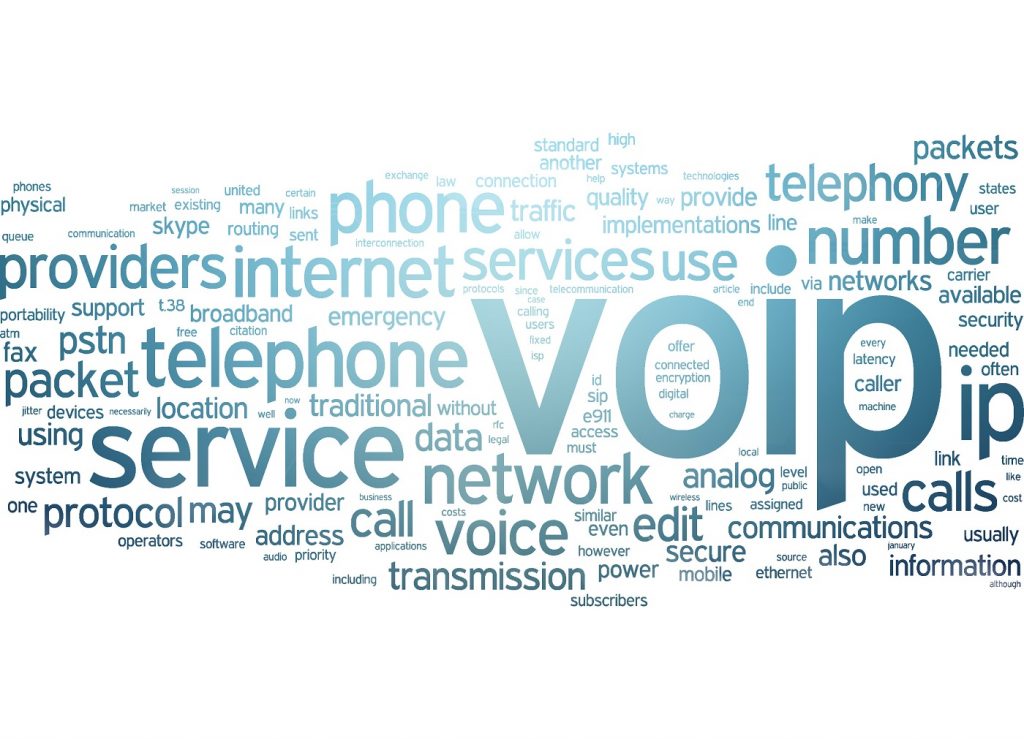AI chatbots are essential for anyone looking to offer an engaging experience for potential clients, customers, and website visitors. While human representatives assist with complex customer inquiries, AI chatbots are available 24/7 and can quickly answer questions about your business hours, products, or services.
Numerous chatbot examples are tailored to specific industries and applications, allowing you to program automated responses that cater to your site’s and business’ needs. From Zendesk AI agents to Amazon Lex, this article explores each AI chatbot example, future trends, and how the latest advancements in artificial intelligence can benefit your business needs.
Key benefits of AI chatbots
Chatbots are artificial intelligence-powered technologies that make providing customer support easier. While some chatbots can engage in more interactive conversations, others focus on delivering direct feedback through pre-programmed responses. Additionally, AI chatbots offer several key benefits when designing a website or platform, which are listed below:
- Customer self-service: While some sites rely on live chats with customer representatives to answer questions, you can save time and labor by setting up a chatbot. With a bot, customers can access the information they need with AI assistance.
- 24/7 availability: AI chatbots can also act as virtual receptionists, supporting anyone who needs after-hours assistance. This is especially beneficial for troubleshooting problems with software and services.
- Omnichannel support: Although voice communication is still one of the top methods of engaging with customers, many businesses will benefit from providing multiple support channels for those who prefer a different method of communication than talking on the phone or through email.
- Cost savings: Hiring a live answering service or offering 24/7 access to customer support can be expensive, but choosing a chatbot allows you to provide all these services at a fraction of the cost.
SEE: How to Become a Prompt Engineer (TechRepublic Premium)
AI chatbot examples by industry
AI chatbot examples vary across industries, but each provides unique capabilities that meet specific business needs. The following list highlights some of the most popular chatbots, focusing on notable features and software suggestions applicable to your industry.
Customer service
The primary reason for using an AI chatbot is to improve customer service and experience on a digital platform. Virtual assistants have become a standard component of many business websites, regardless of your business type. They interact with customers by answering questions and providing 24/7 assistance.

For example, Amtrak offers a chatbot on its website named Julie, which answers questions about booking travel, allows users to receive trip updates, and provides more information about reservations and scheduling. Many businesses could benefit from implementing a chatbot that resembles a human, as it makes customers feel more comfortable engaging with artificial intelligence.
Additionally, software like Zendesk allows you to add AI agents to your workspace. These agents can be used as standalone chatbots or as part of a team of customer service agents. Therefore, consider adding a chatbot to your website as an interactive website widget or a virtual assistant.
Elevate your customer service with Zendesk. Customize support solutions and utilize AI agents for seamless automation, ensuring 24/7 assistance and instant communication with customers and employees.
Retail & e-commerce chatbot examples
Another area where AI chatbots are frequently integrated is within shopping platforms. These chatbots address questions and enhance the customer experience by offering extra guidance, sales promotions, and recommendations. For example, Sephora utilizes its mobile app to improve the virtual and in-person experience by providing feedback on purchases and helping locate orders and items in the store.
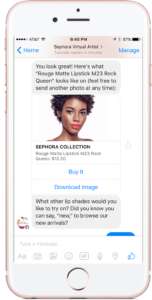
If you want to adopt a virtual assistant for retail, Tidio offers AI chatbots with customizable templates and additional customer service features, such as order status updates and live visitor lists. Specifically, the Lyro chatbot utilizes your data to deliver human-like conversations with customers, which is excellent for driving sales and gathering data-driven insights and analytics.
Sales & marketing
In addition to customer service, AI chatbots can support sales and marketing teams by generating and qualifying leads. Sales chatbots can also engage with potential customers and clients to lead them through a sales funnel, such as collecting contact information or making product recommendations.
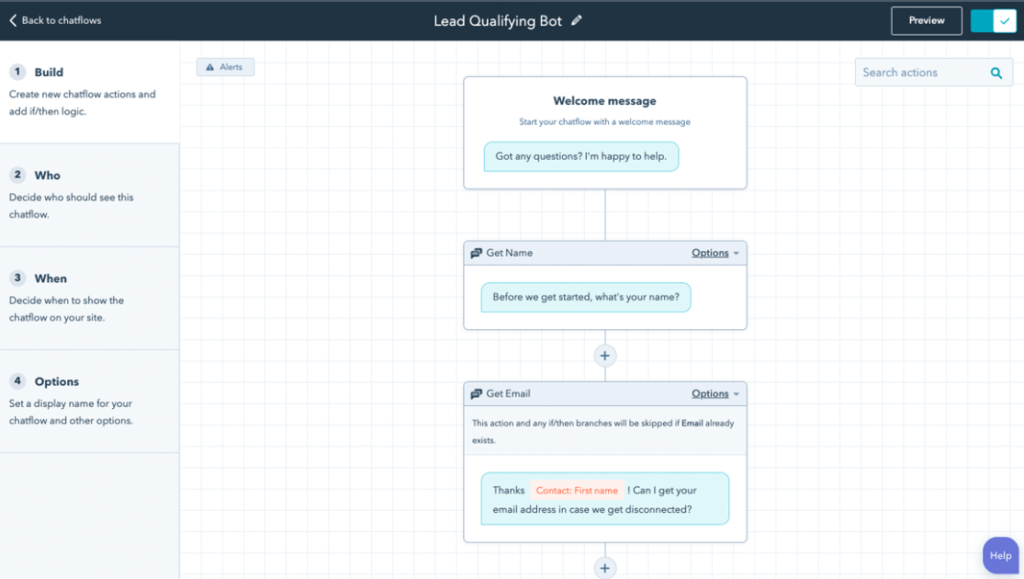
When it comes to AI chatbot software, HubSpot offers a sales chatbot powered by AI. This chatbot connects with popular CRMs, such as Zoho and Salesforce, and can pull information from previous interactions while syncing any new information collected from the chat. This chatbot can also automate tasks, like setting up appointments or adding customers to an email list.
Enhance your sales and marketing efforts with HubSpot. Utilize conversation bots and artificial intelligence agents to generate leads, improve support, and automate marketing campaigns.
Banking & finance
Some of the best AI chatbot examples exist in the financial industry, which often uses these virtual assistants to provide information about your account and additional offerings. For example, Bank of America’s Erica exists on the mobile app and desktop platform to make it easy for customers to access the chatbot and ask questions while receiving additional insights on their accounts and offers.

However, some concerns exist regarding data privacy and compliance with legal standards in the financial industry. Therefore, it is essential to collaborate with a provider that has developed chatbots with these considerations in mind. For banks and business owners, IBM Watsonx offers chatbot software tailored for the financial sector, including data security, multilingual capabilities, and the ability to manage a high volume of customer inquiries.
Health & wellness
Healthcare is another area that benefits from AI chatbots. These chatbots can answer frequently asked questions, schedule appointments, and follow up on healthcare concerns. These chatbots are valuable for organizations or healthcare providers offering 24/7 support to patients or clients. However, it is crucial to ensure that these chatbots uphold data privacy standards to protect health information.
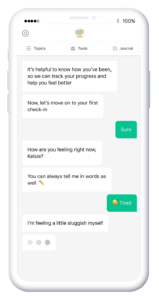
Within the mental health industry, several companies are developing AI chatbots that help provide users with support and guidance during difficult times. AI chatbots, like Woebot, also offer helpful resources, exercises, check-ins, and mood tracking. Although mental health bots are not a replacement for healthcare professionals, they can be a great support or resource for clients in between visits.
Education & learning
One of the most significant benefits of AI chatbots is their conversational skills. Many educational platforms and language learning apps have integrated this technology so students can practice their skills. These chatbots can also act as AI tutors, correcting students on their assignments and gamifying the educational environment.
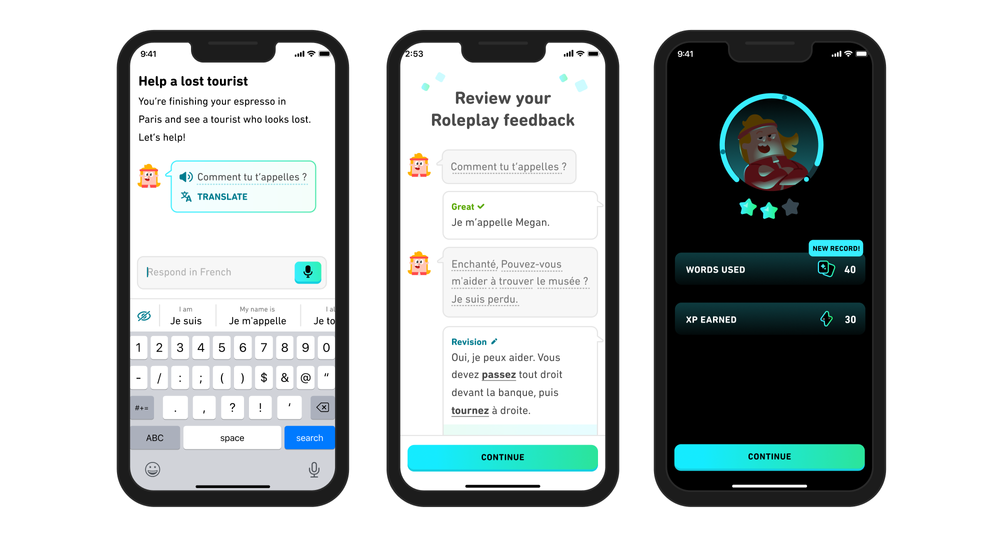
For example, Duolingo has launched a new generative AI-driven version of its app, enabling users to roleplay and practice their language skills with a chatbot. The chatbot, named Lily, is accessible through the Duolingo Max subscription, which also provides video calls and feedback on improving language skills.
Social media & technology
Social media platforms and big tech companies frequently lead the adoption of new technologies, with numerous AI chatbots designed to serve as virtual companions for users. These conversational AI chatbots can integrate various products and services to create unique user experiences.
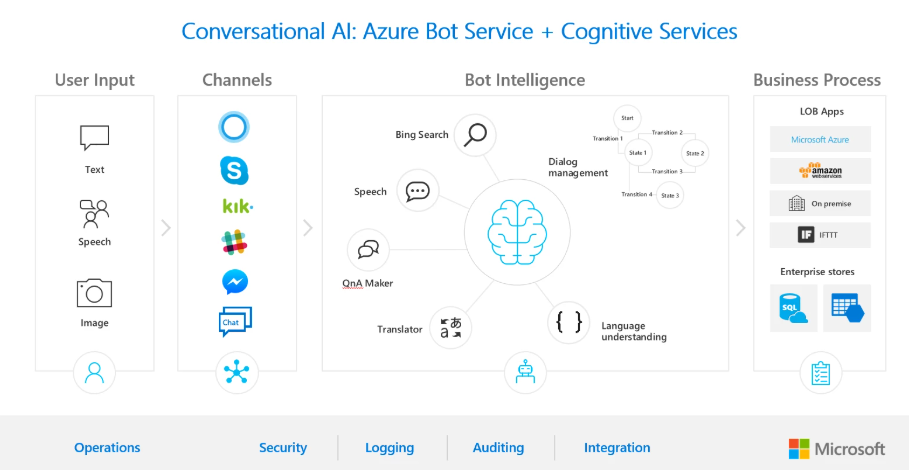
Microsoft has established itself as one of the leading companies in the race to adopt generative artificial intelligence. The Microsoft Azure Bot Service integrates with multiple channels to create bots to help plan projects, automate workflows, and ensure compliance standards. You can also pair the bot with Microsoft CoPilot to access advanced conversational intelligence features in a low-code platform.
Omnichannel contact centers
AI chatbots are a helpful resource within business phone systems and contact centers because they make dividing labor between live agents and in-person receptionists easier. For large-scale contact centers, integrating enterprise-grade AI chatbots can help manage high call volumes and route calls to voice mailboxes.

For those looking to create a voice-activated conversational AI, Amazon Lex is one of the many chatbots offered by Amazon that use the same technology as Alexa. This chat builder functions effectively within omnichannel contact centers that provide numerous support avenues, such as voice and text engagement, by enhancing the efficiency of customer self-service and call flows.
Additionally, contact center as a service (CCaaS) providers like Nextiva offer access to chatbots as part of their business phone systems.
With Nextiva, you can access omnichannel contact center solutions and advanced artificial intelligence features. Chatbots provide 24/7 support in over 50 languages, ensuring personalized communication to meet your customers’ needs.
Future trends in AI chatbots
In recent years, thought leaders and technologists have asserted that chatbots will transform consumer behavior. However, many individuals still perceive chatbots as tools for obtaining information rather than as agents of conversational intelligence.
Nevertheless, public perception is shifting as AI chatbots become increasingly prevalent across various industries. According to the Springs forecast on “The Chatbot Market In 2025,” over 80% of companies have integrated some chatbot technology, and the market will continue to grow across industries. Continue reading to learn about future trends and expectations surrounding adopting these technologies.
Greater personalization
One way that chatbots will improve in the future is by becoming less generic in their interactions. A Qualtrics survey on AI and automation gathered that over 70% of customers expect a personalized service. AI chatbots are highly customizable, which makes it easy to program a bot to collect information before engaging in conversation. This information can tailor the conversation to a customer’s needs by shifting to a conversation style and tone and including details from customer notes.
Anticipating customers’ needs
One distinguishing factor between human and AI agents is their capacity for predictive forecasting. In collecting chatbot statistics, Microsoft states that 55% of businesses believe that chatbots are beneficial and improve customer satisfaction. AI chatbots can use previous data stores to predict a customer’s needs in current and future interactions. As an individual interacts with the chatbot over time, this makes it even easier for the bot to respond and make suggestions on how to assist.
Integration with generative AI
Deloitte’s annual Tech Trends report centers on the rising popularity of large language models (LLMs) like Anthropic’s Claude and OpenAI’s GPT-4, which is critical to the future of chatbots. Many chatbots can be integrated with generative AI to improve their conversational intelligence. Using a foundation model, you can train the LLM on customer data, agent training materials, and other business data to enhance engagement quality.
Improved automation & analytics
As AI chatbots become more autonomous, they can be used for more than just customer service. For example, connecting a chatbot to software for appointment scheduling can automate setting up meetings or reservations. Chatbots collect data and analyze business insights to improve your products and services. So, in the future, chatbots will become more autonomous and capable of taking on more complex tasks and responsibilities in the workplace.
How to choose the right AI chatbot for your business
Choosing the right chatbot requires understanding the types of software and technologies available and the features most beneficial to your customers. Below is a list of questions to consider before selecting an AI chatbot for your business:
If you want to adopt a chatbot, you likely want to improve customer service or how visitors and potential clients engage with your website or platform. However, you should also clearly understand what a chatbot will help you achieve.
For example, do you want to reduce the cost of hiring multiple receptionists or improve key performance indicators when handling calls? Understanding your intended outcomes will help you develop and measure your goals to get the most out of adopting this technology.
Next, you should address the type of customer that often comes to your website or business for products and services. For example, consider the questions people typically ask or what they try to find. Then, you should look for a chatbot that reflects those needs.
If people often come to your website to learn more about your business, you should include a chatbot on the front page that can answer frequently asked questions. Alternatively, if you know that people need help troubleshooting problems, placing a chatbot on your customer service page could also be beneficial.
Once you understand your business goals and customers’ needs, you should start looking for chatbots with features that work well with your business. For example, if you have a retail or ecommerce business, you should look for chatbots that integrate with customer relationship management (CRM) software, while sales teams could benefit from a chatbot that can generate and qualify leads.
Finally, you should determine how best to build a chatbot for your business. While some companies can create your chatbot or provide low-code solutions, others may need a team of developers or advanced technical expertise. Therefore, select an AI chatbot that aligns with your capabilities.
After choosing a chatbot, you can start designing the flow of conversation, setting up any foundational models or integrations, and customizing your bot to respond to specific inquiries. You can also decide on the tone and personality of your chatbot, making sure that it reflects your brand voice and style.
Frequently asked questions (FAQs)
There are many examples of chatbots within the realm of artificial intelligence that differ from industry to industry. For example, Bank of America’s Erica is a well-known chatbot within banking and finance, while Sephora’s Virtual Artist is a popular chatbot in the retail space.
The best AI chatbot is the one that functions best for your business. Numerous chatbots are available for individual users and professionals, so feel free to explore the options outlined in this article to learn more about them.
Yes, Alexa is an AI chatbot with voice control that can also be used as a virtual assistant by accessing the advanced artificial intelligence features in Alexa+.





